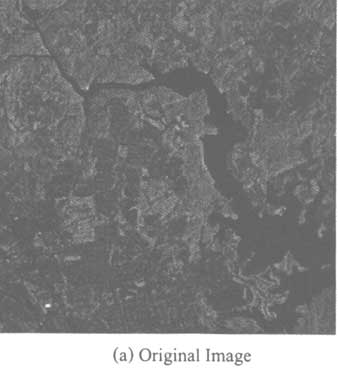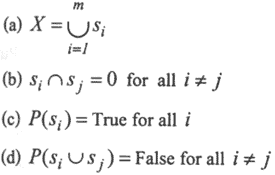| GISdevelopment.net ---> AARS ---> ACRS 1999 ---> Image Processing |
Segmentation on the Edge
Preserving Smoothing Image
A somboonkaew(1,2), S. Chitwong(1), F. Cheevasuvit(1), K. Dejhan (1) and S. Mitatha(1)
(1) Faculty of Engineering, King Mongkut's Institute of Technology Ladkrabang,
Bangkok 10520, Thailand
(2) Electro-Optics Lab, in Faculty of Science, King Mongkut's Institute of Technology
Ladkrabang, National Electronics and computer Technology
Bangkok 10520, Thailand
A somboonkaew(1,2), S. Chitwong(1), F. Cheevasuvit(1), K. Dejhan (1) and S. Mitatha(1)
(1) Faculty of Engineering, King Mongkut's Institute of Technology Ladkrabang,
Bangkok 10520, Thailand
(2) Electro-Optics Lab, in Faculty of Science, King Mongkut's Institute of Technology
Ladkrabang, National Electronics and computer Technology
Bangkok 10520, Thailand
Abstract
The edge preserving smoothing of recently researches have been shown that the noise in the image is removed as the details of region boundaries are still preserved. The smoothing process tries to select the most homogenous mask a certain number a proposed masks. The average of gray level from the selected mask will be assigned to the considered pixel. However, the proposed masks cannot preserve the thin line if its width is less than 3 pixels. Therefore, to overcome this defect, this paper proposes some smoothing masks than can maintain the thin lines. The proposed masks will be the straight lines and bend lines. These new proposed masks will be cooperated with the recently proposed masks. The resulting image shows clearly that the thin edges and region shapes can be preserved better than the recent results. Finally, the split-and-merge algorithm is applied to the smoothed image in order to yield a segmented image.
Introduction
Image segmentation is widely used for satellite image classification. The general method of segmentation algorithm is based on two properties, which are similarity and discontinuity [1] of gray level value. The principle of segmentation algorithm is to subdivide an image based on sudden changes in gray level. The segmentation region of interest will be separated from the other region by edges around it.
One of the methods for obtaining the segmented image is using edge preserving smoothing [2,3]. The approach is to smooth the pixel of interest in order to obtain the most homogenous region. Recently, Tomita [2] has been proposed five rectangular masks as show in Fig. 1. the considered pixel (x,y) is in all these masks. The average gray level of the most homogenous mask will be assigned to the considered pixel. But the rectangular masks are not suitable for the region with complex shape as mention in [3]. Therefore, Nagao [3] has been proposed other 9 masks as shown in Fig. 2. The 9 masks consist of four pentagonal masks and four hexagonal masks with the considered pixel (x,y) are in corner of each mask. While the ninth masks is a 3*3 rectangular mask where the considered pixel (x,y) in the center of the mask.

However, Nagao's masks cannot preserve some thin regions if their widths are less than 3 pixels. Such kinds of regions are roads, rivers and bridge of reservoirs, etc. therefore to avoid this kind of defect, we propose some new masks as shown in Fig. 3.
Edge preserving smoothing process
The procedure of edge preserving smoothing is as follows:
1) Calculate the average gray level of pixels in each mask.
N is the number of mask, sk is the subset of pixels in each mask and f(I,j) is the gray level of the coordinate f (i,j) . while M is the number of pixels in each mask.
2) Calculate the variance of each mask with respected to the considered pixel (x,y).

3) Search the mask with minimum variance.
4)assign the average gray level of the selected mask to the considered pixel (x,y).
5) Apply steps (1) to (4) to all pixels in the image.
6) Iterative the above process until the gray levels of all pixels in the image do not change.


The result of smoothed image obtain by the edge preserving smoothing can be presented in the Fig.4. The smoothed image shows clearly that our proposed that our proposed masks can be applied to preserve the thin region as shown clearly in the enlarged images. By the resulting image, the segmentation will be applied to it in order to obtain a segmentation image.
Segmentation method
here we choose the split-and-merge method [5] for segmenting the smoothed image. The algorithm of split-and-merge can be described as the following.
Let X be an image of size 2n*2n pixels, f(x.y) is gray level of any pixel in X where the heterogeneity of subset Xi can be measured by d(Si). If P(Si) be a logical homogeneity predicate, then.
P(Si)=True if d(Si) < e, e being a given threshold
The image X is partitioned into subset Si where i=1,2,3,…,m such that

Provided Si and Sj are adjacent in X
A split-and-merge procedure can start from an arbitrary partition size of Si l, which is square mosaic block of 2l*2l pixels for L=1,2,3,…n. First, the merge procedure is applied to enlarge the subsets Si l , then the split procedure is employed to break the initial square blocks which do not satisfied (c). Finally, the blocks will be grouped together which must be verified (d).
By applying the split-and-merge procedure to the image f Fig.4. the result of segmented image can be shown as Fig. 5.
Conclusion
The edge preserving smoothing algorithm can be removed noise while the detail of region boundaries can be protected without blurring. By using our proposed masks the thin regions can be maintain in the smoothed image. By applying the split-and-merge algorithm to the smoothed image, the segmented image is obtained as a result. The segmented image is shown clearly that the homogenous can be detected. Each homogenous regions will be classified easily.
Reference
- R.C. Gonzalaz and R.E Woods, "Digital Image Processing",
Addison-Wesley Publishing company.
- F. Tomita and S. Tsuji, " Extraction of Multiple regions by
smoothing in selected neighborhoods," IEEE Trns. Systems, Man and
Cybernetics SMC-7, 1997, pp.107-109.
- M. Nagao and T. Matsuyama, "Edge Preserving Smoothing," Computer
Graphics and Image Processing, vol. 9, 1979, pp.374-407.
- S.L. Horowitz and T. Paviles, "Picture Segmentation by a directed
Split-and-Merge Procedure," Proc. 2nd Int. Joint. Conf. On Pattern
recognition, Aug. 13-15, 1994, pp.424-433.
- F. Cheevasuvit, H. Maitre and D. Vidal-Madjar, "A Robust Method for Picture Segmentation Based on a Split-and-Merge Procedure," Computer Version, Graphics and Image Processing 34, 1986, pp. 268-281.